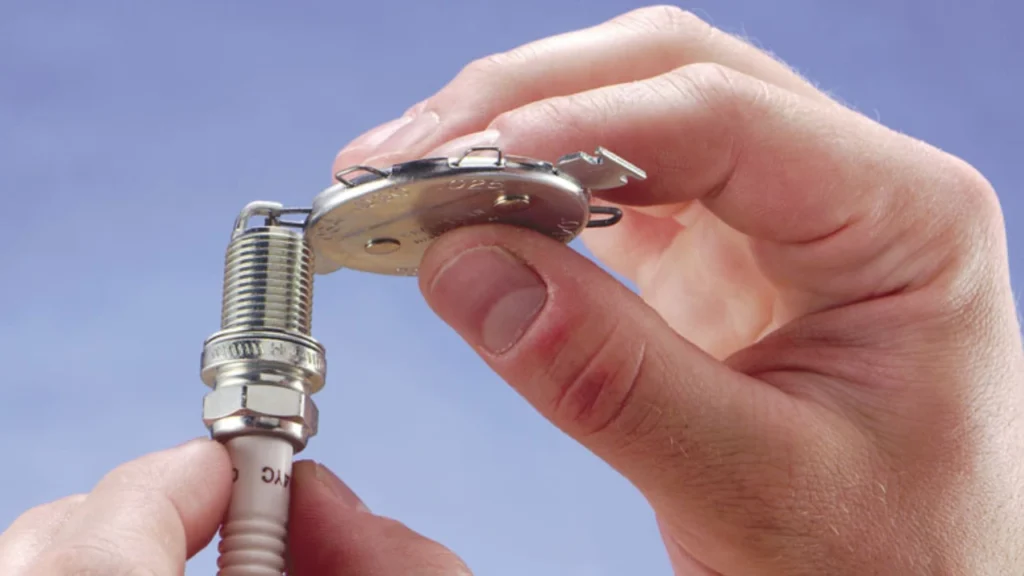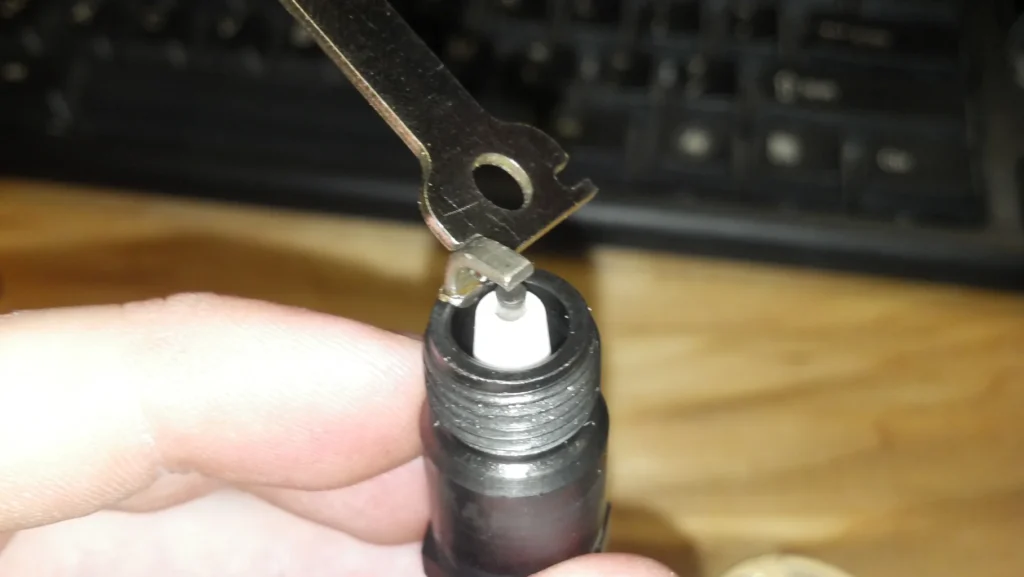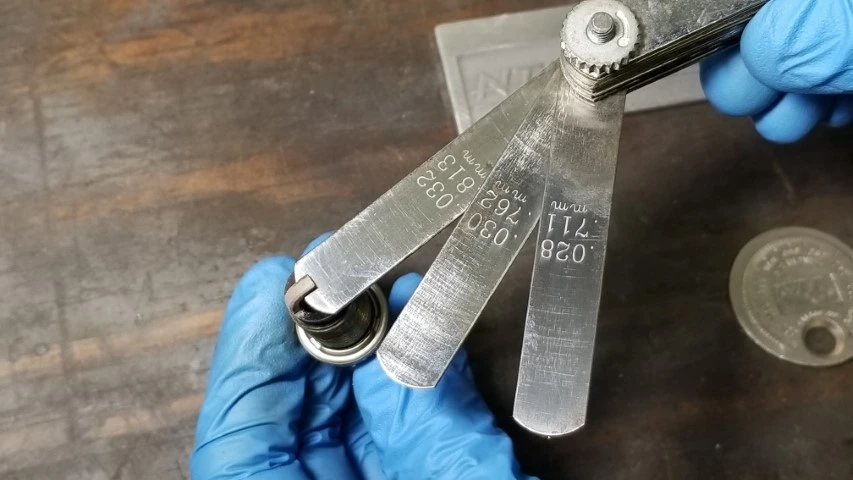As time progresses, the little details of mechanics are often lost. Unless your parent or grandparent taught you how to set a spark plug gap, you probably didn’t even know that was a thing.
Yes, spark plugs are manufactured with a gap, but that spark plug gap is rarely what it is supposed to be on your particular vehicle. There are several factors that alter the spark plug gap range for the plugs, and the difference can mean running, running well, and running great.
Your fuel economy will suffer too if not adjusted correctly. That’s why learning how to set a spark plug gap is so important.
Why Gapping Matters?
The distance of the gap on a spark plug depends on the voltage and amperage generated by the ignition coil. The gap specification is determined by the vehicle manufacturer during engine design and is commonly found in the vehicle owner’s manual or the emission sticker under the hood.
The accuracy of the gap is critical to an engine’s operation and efficiency. However, let’s further explain for those asking, “What happens when plugs aren’t gapped properly?”
Spark plugs that do not have the proper gap lead to premature wear, ignition system stress, and even cylinder misfires. If the gap is too wide the ignition system components are required to work harder to jump across the extended gap leading to spark plug, ignition coil, and control module failures.
It’s also possible the spark could be “blown out” in highly turbulent combustion chambers. A gap that is too small will not fully ignite the air/fuel mixture leading to low power and higher tailpipe emissions.
Do Spark Plugs Always Have to Be Gapped?
Not always. In the past, it was necessary to gap spark plugs, but today spark plugs are usually pre-gapped. It is advisable to double-check that the gap is correctly set to the vehicle’s recommended setting when installing spark plugs.
The gap setting is different for each vehicle, but most are somewhere between 0.028″ and .060″. Consult the owner’s manual to find the recommended setting for the vehicle you’re working on.
How Do I Gap a Spark Plug?
Note: Before you roll up your sleeves and get started with the gap adjustment, remember to be gentle with the spark plug electrode tip. It can break very easily and cause serious engine damage.
If you’re not confident in your mechanical skills, it’s best to let your mechanic handle the repairs.

1. Locate A Gap Gauge or Feeler Gauge.
There are several varieties of tools used to measure the gaps of spark plugs, some of which are more appropriate for more modern plugs, which sometimes feature delicate precious metals.
Most measuring tools will also feature a flat edge typically used for bending the bottom electrode on the spark plug to adjust the gap slightly.
2. Clean the Spark Plug.
If you’ve just pulled it out of the box, it should be in pretty good shape, but if you’re checking a plug that you’ve been using in your car it’s a good idea to clean it off a little with a clean cloth.
Spark plugs can build up some whitish soot on the contact points, so you’ll want to make sure they’re somewhat clean to get the most accurate reading. Never use abrasive materials to clean a spark plug.
Related Posts: How To Change Spark Plugs?
3. Measure the Gap by Passing the Tool Through the Electrodes.
Place the appropriate blade or wire on your gap tool between the electrode tips of the plug or pass the coin through the electrodes to determine the measurement.
Take note of the measurement and compare it to the recommended setting listed in the owner’s manual.
4. Make Any Needed Adjustments.

Select the correct measurement on your gap gauge or feeler gauge. If you can’t get the correct feeler gauge through the gap, the gap needs to be widened. If the tool runs through the gap without touching the electrodes, the gap is too big and must be narrowed.
Use your spark plug gap tool to adjust the gap. Gently bend the ground electrode in to narrow the gap or bend it out to widen it.
Be very careful when making adjustments. Don’t bend the electrode more than a few fractions of an inch. It is durable but isn’t designed to take a lot of pressure. Also, take care not to hit the center electrode.
If you snap off the bottom electrode or damage the center electrode from excessively prying on it, you’ll need a new spark plug. Precious metal iridium or platinum center electrodes can be very delicate when it comes to prying them. It is important to use the proper spark plug gapping tool.
5. Check the Gap Again.

Repeat the adjustment process until the tool fits closely between the electrodes. Be sure to check the gap frequently while making these minor adjustments. A little pressure goes a long way, and if you are not careful, you might adjust too much and weaken the ground electrode strap.
Tap or pry a little, and then measure. It is better to work incrementally than to try and force it in one maneuver.
How To Gap Spark Plugs Without Tool (Step-By-Step)
Maintaining the spark plug gap is an important part of keeping your old spark plug healthy and running smoothly. Ideally, you should use the right tool for gapping your spark plugs. But in case you don’t have any spark plug gap tool on hand, here’s how you can achieve the correct gap.
Things you’ll need:
- Manufacturer’s manual
- Coins (penny, dime)
- Screwdriver
With that out of the way, here is how you can gap spark plugs without a tool:
- Start by using a torque wrench to loosen the old spark plug. You can use a socket wrench, but a torque wrench is also helpful when installing new plug sets.
- Remove the spark plug from the ignition system. Be careful not to damage the spark plug wire or the ignition coil.
- Identify the recommended gap for your car’s spark plugs. These are typically defined in the manufacturer’s manual.
- Next, compare the recommended gap to your coin’s size. For reference, a penny measures 0.06” while a dime is 0.053”. If your recommended gap size is different from these two, you’ll likely need to get a spark plug gap gauge or gapping tool.
- If the coin fits within the recommended specification, you can use it as a gapper. Start by gently sliding the coin between the spark plug gap. Check to see if the gap measurement aligns with the spark plug gap setting.
- For a bigger gap, you can use the back end of a screwdriver to bend the ground electrode (ground strap) inwards gently.
- If you have a very narrow gap, you can carefully use the coin to push the ground electrode outwards.
- Be very gentle. Be careful not to touch the center electrode tip.
- Your spark plug gap should be within the correct gap parameters. If not, it’s probably best to use a spark plug gapping tool or consult a mechanic.
This method is not recommended for expensive platinum or iridium spark plugs. Iridium spark plugs can be very delicate and can bend very easily with too much pressure, thus damaging the plugs.
What Happens if You Ignore Gapping?
Whether you have spark plugs with the wrong gapping or a lower-quality set where the gapping isn’t adjusted — you’re going to run into a bunch of problems.
Some of the most common ones are:
- Engine misfiring
- Rough idling
- Engine knocking
- Poor engine performance
- Stalling
- Difficulty starting your engine.
If you’ve ever experienced the symptoms of bad spark plugs, it’s almost exactly the same.
If that isn’t bad enough, an incorrectly gapped spark plug could also reduce the long-term durability of your engine.
Related Posts: How Much Does it Cost to Replace Spark Plugs?
Our Verdict
When it comes to routine engine maintenance, it’s always best to have the right tools. But if you’re in a pinch and don’t have time to get the right tools, that doesn’t mean you have to throw in the towel.
With a bit of creativity and persistence, you can get the job done, even if you’re missing a tool or two. Hopefully, this guide helped you figure out the basics of spark plug gapping and how to gap spark plugs even without a gapper.